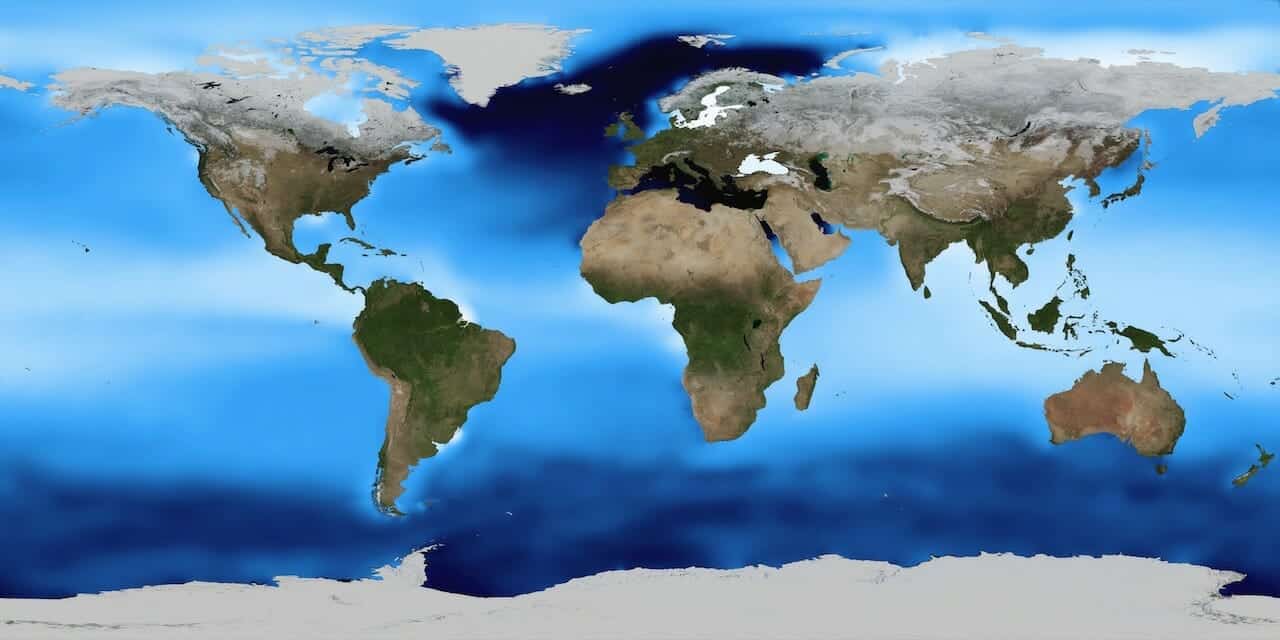

A map of ocean salinity at the surface, one way scientists track the effects of shifting storms or melting ice. Image credit: NASA/Goddard Space Flight Center Scientific Visualization Studio.
An international collaboration among dozens of scientists has come within less than a millimeter of attaining a long-sought goal: accounting for all the jostling, overlapping, and constantly changing contributions to global sea-level rise.
A just-published paper assembles virtually all the puzzle pieces – melting ice, warming and expanding waters, sinking coastlines and a stew of other factors – to arrive at a picture of remarkable precision. Since 1993, global sea level has been rising by an average 3.1 millimeters per year, with the rise accelerating by 0.1 millimeter per year, according to the study published Aug. 28 in the journal, “Earth System Science Data.”
“Global mean sea level is not rising linearly, as has been thought before,” said lead author Anny Cazenave of France’s Laboratory for Studies in Geophysics and Oceanography (LEGOS). “We now know it is clearly accelerating.”
The paper’s main achievement, however, is its declaration of near “closure” for the global sea level budget. Much like balancing a household checkbook, scientists have been working for decades to correctly account for all the factors contributing to the observed rate of sea-level rise.
And it’s a far trickier proposition than might first meet the eye. The melting rate of ice in Greenland and Antarctica, as well as in mountain glaciers, or the amount of heat added to Earth’s oceans, causing seawater volume to increase – these and other contributors must be mathematically synthesized to try to make them all fit together.
The assessment, conducted in 2017 and 2018, “closes” the sea-level budget to within 0.3 millimeters of sea-level rise per year since 1993. That was the beginning of the satellite record, when altimetry measurements began tracking sea level changes from space. The period also includes deployment of floating ocean sensors under the “Argo” program.
“This is an exhaustive look at what has been done in the last few years,” said Ben Hamlington, head of the NASA Sea Level Change Team and one of the study’s co-authors. “Once we have a better fundamental understanding of what we’re observing in the (satellite) record, we can start projecting that into the future.”
The new paper reviews a broad cross-section of […]
Full article: Keeping score on Earth’s rising seas
Fast and Getting Faster: The Verdict on Sea Level Rise from the Latest National Climate Assessment
Water World: Sea Level Rise, Coastal Floods and Storm Surges
Satellite Snafu Masked True Sea Level Rise for Decades
‘Sunny day flooding’ worsens at NC beaches — a sign sea rise is decades too soon
Clean water is essential for life, yet millions of Americans unknowingly consume contaminants through their…
Human brains contain higher concentrations of microplastics than other organs, according to a new study, and the…
From the Office of the Governor: In anticipation of a multi-day, significant atmospheric river in Northern California,…
From Governor Newsom: Scientists, water managers, state leaders, and experts throughout the state are calling…
Photo: A harmful algal bloom in Milford Lake, Kansas, made the water appear bright green.…
An expanded plastic foam coffee cup is at a donut shop in Monterey Park, California.…